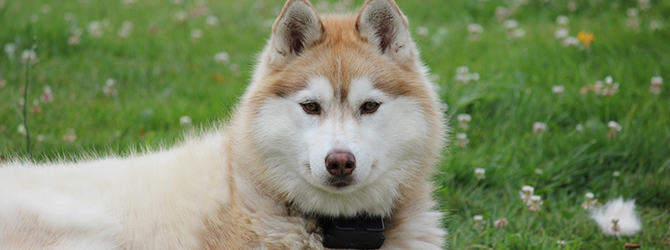The Siberian Husky: thinking of getting a Siberian Husky?
The Siberian Husky is one of the oldest dog breeds. They’ll need lots of exercise and training to stay healthy and happy.
Let’s take a closer look at the Siberian Husky.
Place of origin: Northeast Asia
How big do Siberian Huskies get? 50 – 60cm
How heavy are Siberian Huskies? 16 – 27kg
Life Expectancy: 12 – 15 years
Colour: White, Black, Piebald, Agouti, Black & Tan, Copper, Sable, Splash, Black & White, Grey, Silver, Brown, Red
Please note: A dog’s exercise, training/stimulation and grooming requirements can depend on several factors such as age and health. The same goes for ongoing costs of ownership. For advice on one specific dog, we always advise chatting with a vet.
How much exercise does a Siberian Husky need?
If you’re looking for a canine companion for your outdoor adventures, look no further than a Siberian Husky! These dogs have bags of energy and will need a minimum of 2 lengthy walks per day.
Siberian Huskies are built for arctic climates and can suffer tremendously in warm weather – although they’ll still need their exercise. During summer, it’s important to walk your Husky during cooler times of the day and if you live somewhere with a permanently warm climate, a Husky may not be the breed for you.
Huskies are natural escapologists so when you’re out walking, keep them on the lead until you reach a secure area… and always keep your eyes peeled.
Training: how to train a Siberian Husky
It's important to commence your Husky’s training when they’re young, ideally as soon as you bring them home.
Huskies are very intelligent dogs; they can get bored quite quickly and resort to negative behaviour such as howling and chewing up your furniture. But this is easy enough to prevent!
Keep your Husky’s training routine fun and varied so your dog’s mind stays engaged at all times. Add exercise to their routine too – Huskies are working dogs and love to keep busy!
As with all breeds, always use positive reinforcement when training your Husky and avoid raising your voice.

Grooming: do Siberian Huskies shed?
Your Husky will need brushing roughly once a week. They’re naturally clean dogs and don’t have a strong odour, so you’ll only need to bathe your Husky if they’re really dirty or if they’ve rolled through something smelly.
Huskies do shed a lot, especially during the spring and autumn, so make sure you have a good vacuum cleaner at the ready!
Complete your Husky’s grooming routine with regular tooth brushing, nail clips and ear checks.
Siberian Husky temperament, socialising and ideal home environment
Huskies are real socialites. They thrive in the company of their owners, are fine around children and like canine companions of their own too. If you’re an experienced dog owner looking to welcome a second pooch to the family, a Husky may be a great option.
Huskies can suffer from separation anxiety, especially if they’re the only dog in the house. If you spend a lot of time away from home, a Husky may not be the breed for you.
With regular exercise and proper training, Siberian Huskies make for highly rewarding, fun and devoted pets for active families (especially if you can get used to the howling).
Cost of owning a Siberian Husky
When considering the lifetime cost of owning a husky, remember to take into account:
- Breed-specific food
- Veterinary care
- Pet insurance
- Kennels or dog sitters
- Grooming costs
- Toys and equipment
As a rough guide, allow £100 to £150 a month for the ongoing costs of Husky ownership.
Need more info?
For more info on finding the best dog breed for you and your lifestyle, have a chat with your vet.

